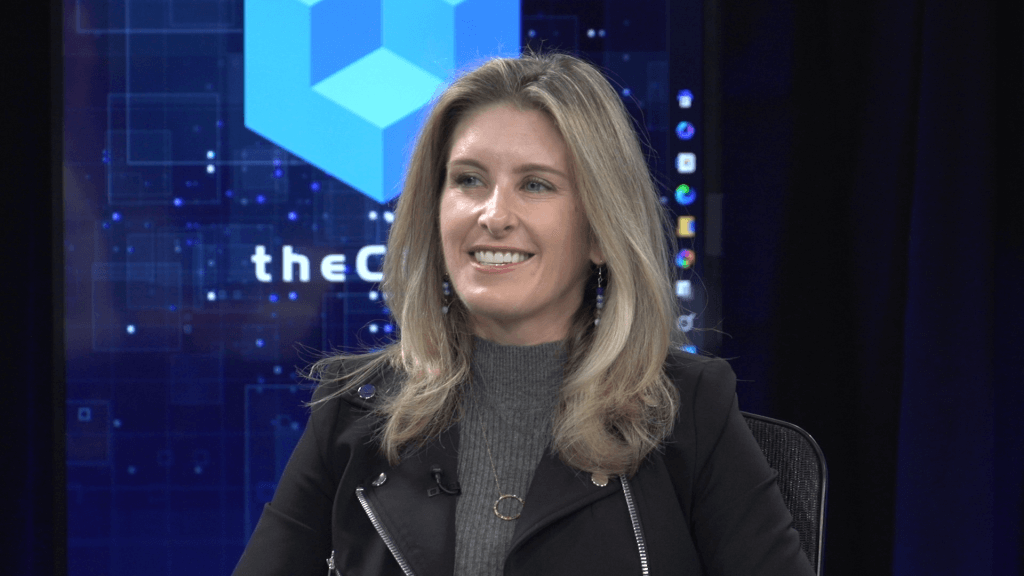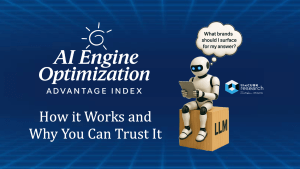Special feature on ServiceNow and Accenture as a part of our Knowledge 2025 coverage.
ServiceNow is on a roll. They had a rock solid quarter, quadrupling the number of their Pro Plus AI deals and surging 15% as Wall Street froths over their full year subscription revenue guidance for 2025 between $ 12.64B – $ 12.68B (GAAP). They’ve spiced up their marketing and are leaning into B2B storytelling. ServiceNow videos aren’t the usual case study corporate fluff, their recent film “Alt Shift Life” just won a Webby. Internally they’re already seeing results from agentic AI as they co-innovate with the best companies in the world. And they’re about to host 20,000+ of their community members at Knowledge, their annual event.
What does CEO Bill McDermott attribute the ServiceNow momentum to? His elite team, “We have a culture based on elite level execution. When enough people care – and our team does – you’re a winner.” This reinforces what we’ve been hearing throughout our multi-part series with ServiceNow and Accenture. It’s about more than reinventing work, it’s about it making work better for people. McDermott summed it up well on the ServiceNow 1Q 2025 earnings call, “[ServiceNow] is winning the AI race because we ourselves are running it. Ambition and prudence are not mutually exclusive concepts. You don’t build a defining company by surrendering to uncertainty. You do it by seeing challenges as opportunities.”
This research note summarizes the ServiceNow and Accenture ethos, approach, and success indicators. It explores AI adoption internally, externally, and around the world. And the featured executives astutely confront the myths and challenges facing companies today. Key topics include navigating the anxiety around job displacement, the importance of co-innovation partnerships, the need for iterative development and robust testing, and the gradual shift from assisting tools to autonomous agents. Central to the discussion is the notion that AI is less about replacing human workers and more about empowering them, providing solutions that enhance efficiency and create more meaningful work experiences.
Key series highlights include:
- ServiceNow as a Foundation: ServiceNow provides a platform where AI is built in, not bolted on, to enhance existing processes rather than introducing new tools
- Transforming Workflows: simplifying complex systems across every corner of a business, streamlining processes, and reducing the “swivel chair” effect where employees have to use multiple systems to complete tasks
- Real-World Applications: our discussions emphasize showing clients concrete examples of how AI can improve workflows and create ROI, rather than just abstract concepts
- Addressing Legacy System Fatigue: AI is embedded in the ServiceNow Platform to apply out of the box on existing systems and avoid the need for complete overhauls
- Addressing AI Myths: our conversations address concerns about AI taking jobs, emphasizing that it’s an evolution of technology and an opportunity for growth
- Impact on Employees: realizing the benefits of AI like freeing up employees for more creative and strategic tasks by automating repetitive ones
- Results: SAP has seen a “hockey stick” adoption of AI use cases with time savings for agents, such as 60% time savings in creating knowledge articles.
- Customer Experience: AI is used to improve customer service and create a more convenient experience
- Partnership: The collaboration between ServiceNow and Accenture helps organizations tailor AI solutions to their specific needs
- Employee Champions: The importance of individuals within organizations who champion AI adoption is highlighted
- Future Goals: Their future goals include bringing AI to more enterprises, focusing on industry-specific solutions, and eliminating “soul-crushing work.” They also want to showcase customer success stories
Embracing the Human Element in AI Integration
“Putting AI to work for people… encapsulates everything that we want to do together in our partnership,” Dave Kanter expressed, highlighting the core sentiment driving the collaborative augmentation of human labor. It’s about allowing professionals to focus on higher-value tasks and strategic initiatives.
Aspirations aside, there’s uncertainty about AI, particularly the fear of job displacement and the need for significant change management. Managing anxiety about job security requires transparent communication, education, and a demonstration of tangible benefits. The key strategy is to emphasize that AI is intended to enhance human capabilities, not replace them. But how does that work in practice and at scale?
Hardy Kuhn of SAP notes in the series that concerns about job loss are prevalent and require proactive communication. “There’s a lot of anxiety, a lot of fear, a lot of mistrust, but also a lot of excitement about these things,” which speaks to a need to address emotions when implementing technological advances. By focusing on how AI can reduce repetitive tasks and allow employees to concentrate on more strategic and creative aspects of their work, organizations can alleviate fears and foster a more positive attitude towards AI adoption, according to Hardy Kuhn, “And will it transform jobs? Absolutely. But I hope for the better, and I think that’s where my real responsibility to all of us in this industry and to all of us who create and use and shape these AI moments, you have to really think about data, data privacy, how you use it, responsibility of these things, how they’re used and what they do.”

Fostering a sense of ownership and participation among employees is also critical. Providing training, opportunities for feedback, and a supportive environment helps ensure that AI integration is seen as a collaborative endeavor rather than an imposition. Marcelle Howard stated, “The people quotient is just so exciting… when you see people actually thriving in their roles, because of the work we’re doing and because of this technology,” emphasizing the positive impact on employee engagement. The focus shifts from the automation of jobs to enhancing the human experience in the workplace, further evidenced by her quote, “It’s really how we incorporate this to strengthen the impact that people and humans can make in their jobs, whether they’re end users, whether they’re professional users.” This requires a thoughtful approach that acknowledges the social and emotional dimensions of technological change.
Agentic AI in Transforming Enterprise Operations
“The bottom line is, the customer today needs a control tower to run their business… There’s data that’s coming at these enterprises from many different sources. And [ServiceNow] built the world’s best Workflow Data Fabric and fastest database to integrate with all these other data sources.” McDermott sums up the observability challenges in an increasingly data-rich world. Challenges not only faced by the private sector, but demonstrated by their 30% growth in the U.S. public sector in the last year. McDermott shared, “we’re laser focused on modernizing the government and elevating how it serves the American people and fully behind the administration to really help these federal agencies save millions and billions overall. We have a proposal together now with three and a half billion associated with it to take out the costly legacy systems. So we’re leaning into the challenges that people face, and by doing so with empathy and heart and having all of our employees and ecosystem partners do it with us, we can move mountains.” It all comes back to the people.
The implementation of AI technologies in service management involves a phased approach, beginning with foundational platform capabilities and advancing towards more complex, agentic systems. Alex Herttrich explains that it’s not about introducing new isolated tools but layering intelligent automation over existing processes, which reduces disruption and accelerates time to value. “AI is the step after you’ve built a foundation… AI is something that builds on top of the platform. It’s not bringing a new tool, it’s rather bringing new capability that helps you automate intelligence on top of your existing processes.” These strategies also facilitate easier adoption, as they are not completely unfamiliar to agents and other personnel. Companies can focus on enhancing existing workflows rather than overhauling the existing ecosystem, he continued, stating, “And that’s also a benefit of ServiceNow and this is why most customers have started hundreds of PoCs.”
As organizations gain confidence and experience, they move towards more sophisticated AI applications, such as agentic AI, the army of autonomous agents that can make decisions and execute tasks with minimal human intervention. Hardy Kuhn emphasized that the progression starts with simple, focused use cases, such as case summaries, and gradually moves towards more complex functions like automated problem resolution and knowledge article creation. Hardy shared, “It started with easy prompts, then they became more complex prompts, then they became prompts that were using extended knowledge in the background. Then we programmatically chain some of these. And now I think the next step is obviously agentic AI.” This shift requires a robust platform capable of orchestrating multiple agents, ensuring data integrity and security, and a progression in the capabilities and use cases of AI technology. “Where we have a use case in mind that is more complex and where agents then autonomously need to decide on certain outcomes what the next step is, I think that’s where we’re starting to invent and build up these agentic AI use cases as well.”
Better Together: Partnerships and Collaboration in Co-Innovation
Kuhn discussed the value of established relationships with ServiceNow and Accenture, emphasizing that their ongoing partnerships were critical to their success. “Luckily we were already underway with the two partners for quite a while, so this was not a new relationship that we established.” He went on to add, “We are a technology vendor, so obviously we bring AI capabilities and AI technology with Joule as the chatbot and with our business transformation platform that has now a GenAI capability to the table and we have to combine both of these technologies for the better of the use case.” This approach allowed for shared expertise and a tailored strategy aligned with specific business needs.
Marcelle Howard highlighted the synergistic benefits of these partnerships, noting that they enable organizations to bring AI to life in ways that are specific to their unique processes. “Accenture can come in and say, ‘Let’s work together to have this trifecta of what is going to make the customer successful,’ where Accenture can shine with their expertise in the consulting space and the technical space, and where ServiceNow can come in with the applied technology to bring it all together and make it happen.” It is shown that a multifaceted approach brings several perspectives into the implementation phase, which leads to greater success. “And so, we’ve seen gains that have never before been realized.” By leveraging the strengths of each partner, organizations can overcome challenges and achieve transformative results.
The Savvy Angle:
Companies are over the hype and ready for AI ROI. The teams and solutions that can deliver them will power the ecosystems that revolutionize work with reign supreme.
The AI era promises to fundamentally alter how organizations function, streamlining processes and enhancing productivity. It is not merely a futuristic concept but a tangible reality, driving significant transformations in service management, customer interaction, and internal workflows. Across various sectors, there’s a clear push towards integrating AI not just for automation, but for intelligent augmentation of human capabilities. The collaborative approach between ServiceNow and Accenture, illustrates an already working strategy to alleviate anxieties about job displacement and prioritize improved work experiences. The journey towards widespread AI adoption is not without its challenges, yet the shared vision of creating a future where AI works for people, rather than replacing them, underscores a promising path forward for the future of work. By putting the human first, ServiceNow and Accenture are asserting their dominance in the AI ecosystem game.
*Bill McDermott discussed earnings on “The Claman Countdown.” Fox Business. Fox, 2025, April 24. All other quotes and data are from our interviews and research.


